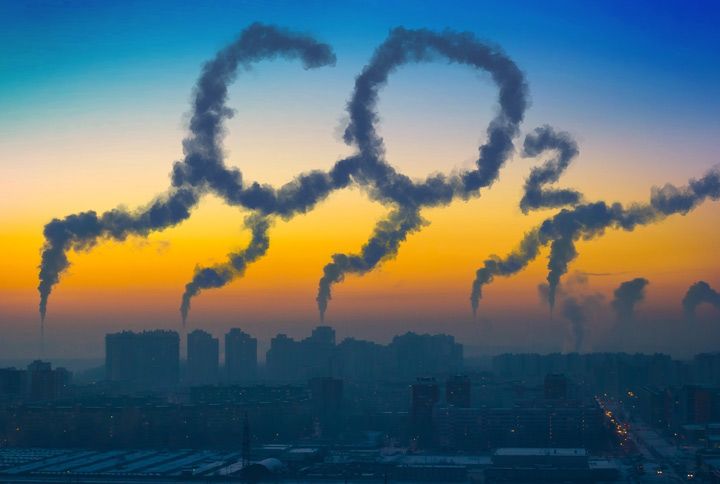Let’s start with the basics—what is carbon footprint? It’s the amount of greenhouse gas released into the atmosphere by an individual, an organisation, so on and so forth. Every single activity we carry out has some form of impact on the environment, whether it’s positive or negative is something we must actively evaluate. For example, keeping your switches on for aeons for absolutely no purpose. Owing to the fact that the release of these gases isn’t actually visible, we don’t realise the consequences of our habits, some of which don’t require any effort to change but seem super hard to break. But quite frankly, you and I, both are well aware that the time to change our negative habits is right now.
So instead of telling you what you can do, I’m going to list out common things that we practise which are not benefitting you or the planet. When you know where you’re going wrong, it won’t be hard to course-correct. So, let’s go!
7 ways you’re adding to the carbon footprint without realising:
1) Wasting electricity
Electricity is generated via non-renewable resources so when you leave that light or that fan on when you don’t require it, you’re also burning valuable resources that could otherwise be saved. Sure, it’s also a way to lower your bills but more importantly, it’s saving non-renewable energy. Secondly, when electricity is being used, actively, the power stations are releasing more carbon dioxide into the atmosphere. So when you have the chance, turn off your lights, fans, empty switches even.
2) Using electrical appliances but not paying attention to their maintenance
Did you know, when any appliance starts to wear out, it also starts to consume more energy to function to its full potential? So not only is it crucial to use any form of appliances carefully, it is also important to check whether or not they’re working well enough. If you’re wondering how you can monitor the energy consumption levels of each appliance, you can invest in an electricity usage monitor which will provide you with readings of each appliance. The salespeople at any hardware or electrical store should help you out with the workings of this monitor.
3) Taking long showers
Wondering how wasting water causes emissions of greenhouse gases? Well, the water that is supplied to your house for domestic consumption is first pumped and treated. This treatment in itself is energy-consuming and invariably releases CO2. After the consumption, treating wastewater also requires energy and does not fail to emit carbon dioxide which is the main greenhouse gas. The wastewater that is released into the oceans also interferes with the acidity of the ocean water. The more CO2 released in the oceans causes more emissions of the gas into the surrounding atmosphere. While this is a broad explanation of how wasting water can contribute to the carbon footprint of the planet, you can personally look at reducing long showers which need you to heat more water for longer periods, air-drying clothes as opposed to machine drying them, not letting your taps run unnecessarily, etc. To know more about how daily usage of water can be harmful to the environment and what you can do to prevent it, you can read a water-intensive piece here.
4) Driving to places that are within walking distance and not getting your vehicles checked routinely
While walking or riding a bicycle isn’t possible at all times, the few times that it is, choose them over a motorcycle or car. Apart from that, individual use of vehicles is less preferable than public transportation. No, no, you needn’t be shy or feel embarrassed about using public transport a lot more than your own transportation because it’s mindful, reduces CO2 emissions by some amount and it also means you think more about the planet than yourself. Other than that, maintaining the interior parts of your car, the tires and basically getting it checked at regular routines is of utmost importance because otherwise, the vehicle just ends up using more energy and releasing that much more gas. Whenever possible, roll the windows down instead of using air conditioning is also a significant way to reduce greenhouse gas emissions.
5) Not segregating waste or composting enough
The way that most households deal with waste is one of the major reasons why landfills are overflowing today, oceans are being polluted with unnecessary components like microplastics and things aren’t returning back to the Earth the way that they should. Segregating waste helps in the prevention of the above-mentioned problems and makes the process of recycling it easier. When it comes to food waste, it is best to not throw it away and instead make use of it to give back to nature by way of composting. Composting isn’t too tough like quantum physics, but it does require a little bit of help and practice. It is essentially turning your food waste into compost with which you can grow plants and vegetables. If you want to learn more about composting and how to get started, don’t forget to check out a handy guide we put together for environment enthusiasts!
6) Shopping mindlessly in the name of retail therapy
The more you shop, the more brands need to collect, which means an increase in production, which consumes a sizeable chunk of natural resources and gives back carbon emissions in return. Producing different types of fabrics requires the usage of harmful chemicals, lots and lots of water, raw materials which many times aren’t sourced ethically or require too much energy to produce, etc. Consuming mindfully will not only be better for your pockets, but it will also be good for the planet.
7) Being oblivious to the harm you’re causing
And lastly, climate change isn’t news, neither are ghastly carbon emissions. So why not actively try to make a change and live a harmonious life? One that’s one with nature? It may be hard to convince others around you but at the least, you’re setting a good example and that might just influence people to follow suit. It is also an excellent way to train kids to follow a relatively eco-friendly and sustainable lifestyle.
If you want an estimate of how much CO2 you are releasing and exactly how you can reduce it, you can check out your carbon footprint here. It’ll help you make decisions in a more informed and practical manner.
Join Malini’s Girl Tribe to be a part of the conversation.

